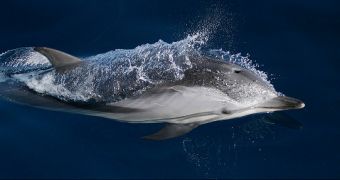Yesterday, green group Sea Shepherd announced that, in the days after the capture and slaughter of a pod made up of over 250 bottlenose dolphins, Japanese fishermen in the town on Taiji killed several other dozen marine mammals.
All in all, five more dolphin hunts were carried out in this part of Japan, the organization details.
Of these hunts, one targeted a pod of 60-65 stripped dolphins. According to Sea Shepherd members and supporters who witnessed the event, the marine mammals were herded in the cove and killed.
To make matters even worse, it would appear that this pod included mothers, juveniles, and babies, and that none of them managed to escape.
The fishermen also captured a fairly small pod of Risso's dolphins, Sea Shepherd writes on its website. Of these marine mammals, two were taken captive, and the rest were killed.
By the looks of it, fishermen in Taiji kill dolphins by inserting metal spikes into their backs. These metal spikes sever the marine mammals' spine, and the animals either bleed to death or drown.
“All of these captures and kills have occurred in less than two weeks since the huge Bottlenose pod capture, captive selection and slaughter, proving that Taiji’s bloodlust and greed never ends,” the organization says.
Sea Shepherd stresses that such brutal dolphin hunts are to continue to take place in Taiji until March 1, which means that many other marine mammals are to be slaughtered.
The organization goes on to argue that, although it has been said that such hunts are part and parcel of Japan's culture, this cannot be true simply because they first started being carried out back in 1969, when several marine parks popped up around the world.
“The hunts have nothing to do with Japanese culture, as they have only been around since 1969 when the burgeoning marine park industry began to take off,” Sea Shepherd says.

 14 DAY TRIAL //
14 DAY TRIAL //